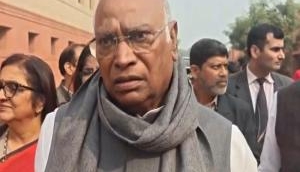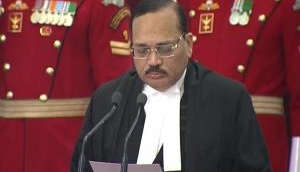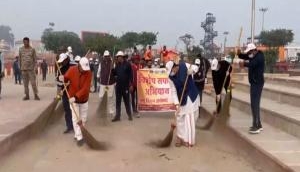
- The Mizo National Front launched an armed independence movement against Indian forces on 1 March, 1966.
- The early success of the attack prompted the Indian government to respond with brute force.
- On 5 March, 1966, Aizawl was ravaged by incendiary bombs dropped by IAF planes, which were sent in by the Indira Gandhi-led government to tackle the uprising.
This article was originally published on the 50th anniversary of the attacks on Aizawl, on 5 March, 2016.
On 5 March, 1966, Indian Air Force planes launched an attack on Aizawl. Initially, the fighter jets used heavy machine gunfire, but as the attack intensified, incendiary bombs were dropped in the city. Many areas were completely ravaged by the bombings.
What led the Indian government to attack its own civilians, inside its own territory? Till this day, New Delhi has refused to acknowledge the bombing of Aizawl. However, 50 years on, the events of 1966 remain an integral part of Mizoram's history.
The background
In 1958, the Lushai Hills district (present-day Mizoram) witnessed one of the worst famines in its history. Mautam, which occurs once every 48 years, led to an increase in the population of rats due to the growth of bamboo flowers. This, in turn, caused a severe deterioration in the food stock in the region.
The Mizo National Famine Front had started as a famine relief organisation, following the inaction of the Indian government in 1959. Over the next few years, it went on to become a secessionist movement. Renamed into Mizo National Front (MNF), young volunteers quickly joined in.
In 1966, a secretive plan, codenamed 'Operation Jericho'. was laid by the MNF top-brass to wrest control of strategic areas away from Indian forces. Led by the popular Laldenga, and reportedly backed by Pakistan with arms and ammunition, the Mizo National Army (MNA), armed wing of the MNF, launched coordinated strikes against government forces in the early hours of 1 March, 1966.
The well-organised rebels managed to take over key installations in Aizawl, Champhai and Lunglei. They also cut off communication lines from Aizawl, paralysing the local administration. The-then Home Minister Gulzarilal Nanda called for 'stern action' against the rebels.
The airstrikes
On March 5, the Indira Gandhi-led government sent in the air force to launch airstrikes in Aizawl. By the second day of the strikes, incendiary bombs set ablaze large parts of the city.
"The marketplace, along with many other important areas, were completely destroyed," Dr. O Rosanga, who heads the Department of History and Ethnography at Mizoram University, tells Catch.
Fortunately, the number of casualties were low as most of Aizawl's inhabitants had fled to nearby towns and cities to escape the fighting. A total of 15 people are said to have lost their lives following the bombings.
The airstrikes paved the way for the ground assault by the Indian army. By the end of March, the uprising had been crushed, and most of the MNF top-brass had fled to East Pakistan or Burma.
"India had fought two wars in the last fours years, against China in 1962 and against Pakistan in 1965. I think the Indian government wanted to send out a signal that it was no longer vulnerable despite the two recent wars, and that could have possibly led to the severe response to the uprising," says Dr. Rosanga, who specialises in medieval and modern history of Mizoram.
However, he adds that there could have been more reasons as to why the Indian government failed to tackle the uprising with the use of less force. The damage to the communication lines may have contributed to the confusion within the Indian government.
"A lot of false propaganda and misinformation was flying around at the time. Moreover, Mizoram, because of its proximity to East Pakistan and Myanmar, was placed at an important strategic location. This is likely to have contributed to the manner in which the government reacted," he says.
The aftermath
"The Mizo uprising of 1966 was the result of discrimination, deprivation, abdication of responsibilities by the state, of abandoning a people in times of a grave crisis, helplessness of a tiny tribe in the face of a natural disaster, settling personal political scores by leading political leaders of the state and fight for political survival of a small constituent tribe in a big nation-state," historian Sajal Nag writes in 'The Mizo Uprising'.
"There was a feeling of alienation at the time, of being ignored by the Indian administration. A majority of Mizos felt they were treated as an alien group of people, and not as Indians," Dr. Rosanga says about the uprising.
While MNF continued to fight for a sovereign Mizo nation from East Pakistan, a new reign of terror was unleashed by the Indian Army in Mizoram. In order to crush the Mizo resistance, the army and the Indian government decided to regroup the villages.
Out of the 764 viillages, a total of 516 villages were destroyed and regrouped into 110 'Protected and Progressive Villages' (PPVs). Around 95 per cent of the rural Mizo population was grouped into these PPVs. The dreaded Armed Forces (Special Powers) Act (AFSPA) was put in place as well.
While moving into these PPVs was supposed to be voluntary on paper, there was hardly anything voluntary from the part of the villagers. Senior journalist Abheek Barman describes these PPVs as 'concentration camps, minus gas chambers'.
Post-1966, the army is accused to have used rape and torture as tools to subjugate the local population of present-day Mizoram.
Unprotected women were often mercilessly raped and abused by the soldiers - a woman named Zaikungi died as a result of being gang raped by army personnel at Chhawrtui in June 1967. Many such cases also went unreported because even if reported, many of them went unresolved. Dr. Lalthanliana, the Civil Surgeon at Aizawl Civil Hospital in 1966 relates an incident where four women were gang raped by members of the SF in the course of their routine checks. These women were admitted to the Civil Hospital and the doctor made a complaint to the District Commissioner and the Army authorities on their behalf. In response, a 3-officer team led by an army doctor of Lieutenant Colonel rank was sent to the hospital to investigate the case. What irked the doctor was that the army officers never even looked at any of the patients much less spoke with them, and they left saying, "No one is badly hurt". Women took to darkening their faces with charcoal and soot so as to appear ugly and as undesirable as possible - "The MNF never harassed women, but the vai (appeared) as if they were hungry for women." ('vai' being a reference to mainland Indians; in this case, the armymen)
-an excerpt from the book 'The Mizo Uprising: Assam Assembly Debates on the Mizo Movement, 1966-1971', which is co-authored by Dr. J V Hluna and Rini Tochhawng.
Mizo nationalism and present-day Mizoram
"In the late-60s and 70s, whenever India played against Pakistan or China, in any sport, there used to be widespread support for Pakistan and China. Such was the anti-India sentiment during those times," explains Dr. Rosanga.
The conflict in Mizoram came to an end in 1986 with the signing of the Mizo Peace Accord between the government of India and the MNF. Today Mizoram is a largely peaceful state, and boasts of a literacy rate of over 90 per cent, which ranks second behind Kerala among the 29 Indian states.
Mizo nationalism is well and alive, says Rosanga, but in a different form. "Mizo nationalism may not necessarily be the type of nationalism that was advocated by the MNF. The people of Mizoram want to be independent, not as a sovereign nation, but as a group of people, within the nation of India," he explains.
"The Mizo youth like to identify themselves as Indians. They want to be a part of the nation-building process. So we have moved a long way in the last 50 years," he adds.
Mizo National Front (MNF), which entered mainstream politics following the peace accord of 1986, has been restricted to single figures in the last two legislative assembly elections, having formed the government from 1998 to 2008. Ironically, Congress has been the most dominant party in domestic politics since Mizoram attained statehood.
The people of the state now annually observe 'Zoram Ni' (Zoram Day) on 5 March every year to commemorate the air raids. Fifty years since the air strikes and the subsequent regrouping of villages, Mizos continue to wait for an acknowledgement of the events from the Indian state.
First published: 11 June 2016, 2:10 IST







![BJP's Kapil Mishra recreates Shankar Mahadevan’s ‘Breathless’ song to highlight Delhi pollution [WATCH] BJP's Kapil Mishra recreates Shankar Mahadevan’s ‘Breathless’ song to highlight Delhi pollution [WATCH]](https://images.catchnews.com/upload/2022/11/03/kapil-mishra_240884_300x172.png)

![Anupam Kher shares pictures of his toned body on 67th birthday [MUST SEE] Anupam Kher shares pictures of his toned body on 67th birthday [MUST SEE]](https://images.catchnews.com/upload/2022/03/07/Anupam_kher_231145_300x172.jpg)






